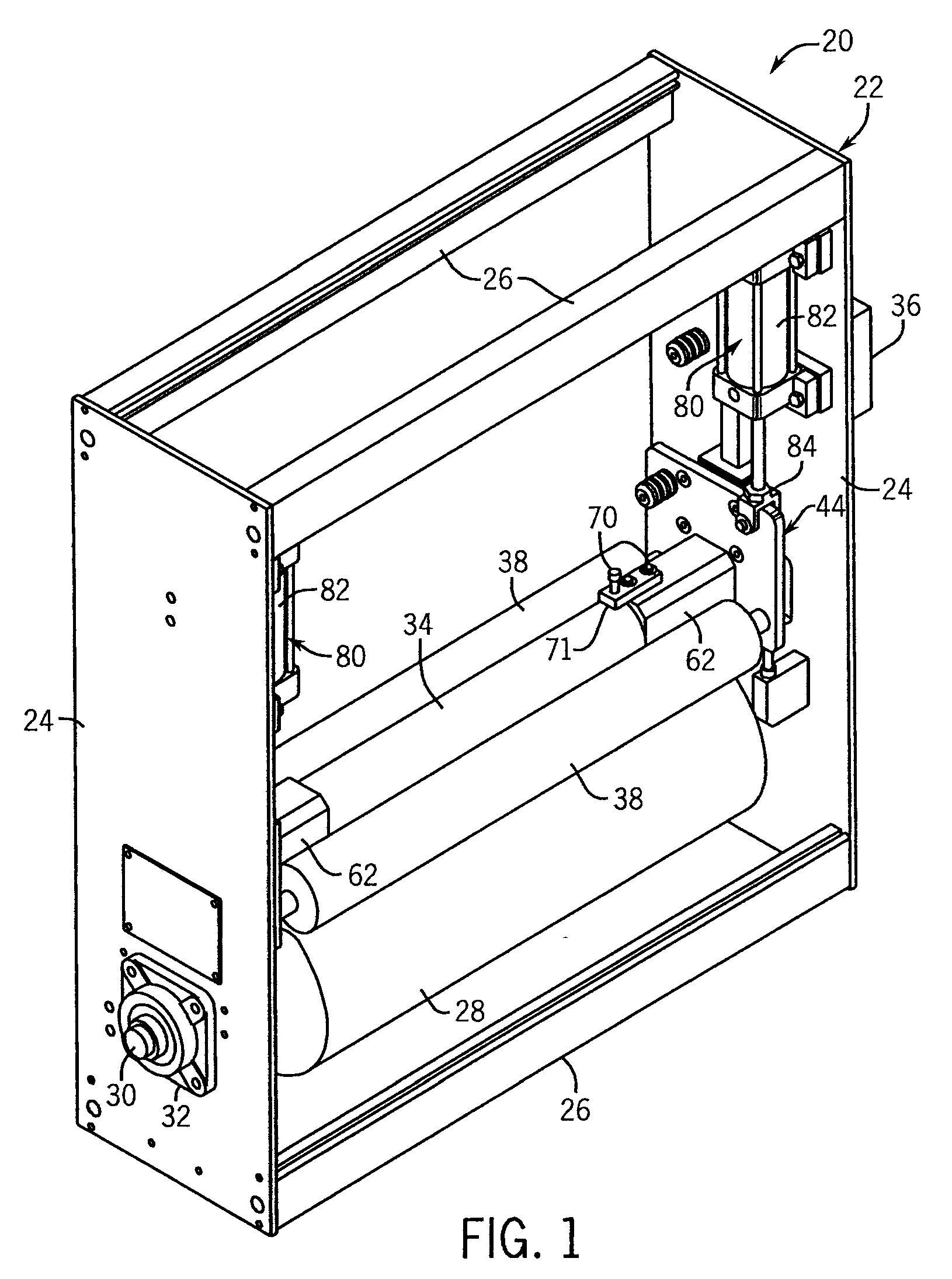Atmospheric Treater With Roller Confined Discharge Chamber
a technology of atmospheric treater and discharge chamber, which is applied in the direction of corona discharge, papermaking, energy-based chemical/physical/physico-chemical processes, etc., can solve the problems of reducing the quality and homogeneity of treatment, and achieve the effect of facilitating the surface treatment of materials
- Summary
- Abstract
- Description
- Claims
- Application Information
AI Technical Summary
Benefits of technology
Problems solved by technology
Method used
Image
Examples
Embodiment Construction
)
[0033]Referring now to the drawings, FIGS. 1-6 illustrate in detail one embodiment of a treater station 20 according to the present invention. FIG. 7 shows a simplified representation of the discharge chamber defining components of this embodiment to both aid in understanding as well as to facilitate comparison with the various other embodiments described herein. FIGS. 8-14 depict other embodiments in which the present invention can be practiced advantageously, again showing the discharge chambers in simplified form in a way similar to FIG. 7.
[0034]All of the disclosed embodiments have in common certain basic components, including a high voltage power supply, one or more electrodes, and one or more rollers. The various embodiments can also all have elongated electrodes and rollers suitable for treating the full widths of web materials in continuous, line-feed applications. Additionally, each embodiment can be operated to effect various discharge treatments, including for example, c...
PUM
| Property | Measurement | Unit |
|---|---|---|
| gap distance | aaaaa | aaaaa |
| gap distance | aaaaa | aaaaa |
| width | aaaaa | aaaaa |
Abstract
Description
Claims
Application Information
 Login to View More
Login to View More - R&D
- Intellectual Property
- Life Sciences
- Materials
- Tech Scout
- Unparalleled Data Quality
- Higher Quality Content
- 60% Fewer Hallucinations
Browse by: Latest US Patents, China's latest patents, Technical Efficacy Thesaurus, Application Domain, Technology Topic, Popular Technical Reports.
© 2025 PatSnap. All rights reserved.Legal|Privacy policy|Modern Slavery Act Transparency Statement|Sitemap|About US| Contact US: help@patsnap.com



